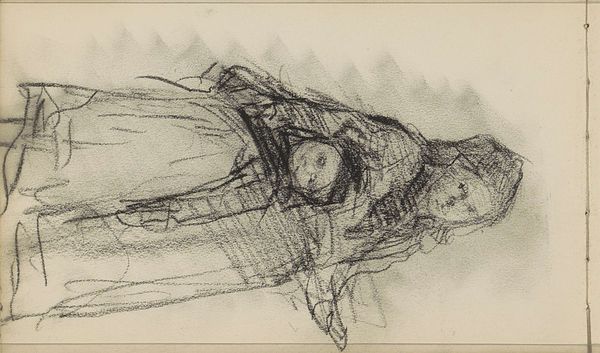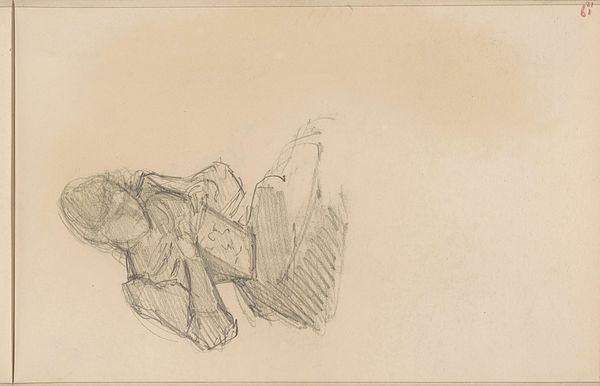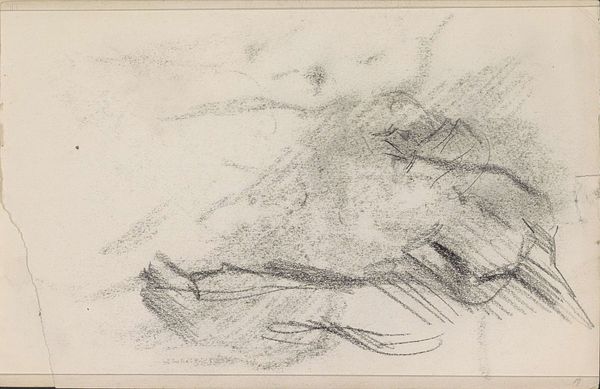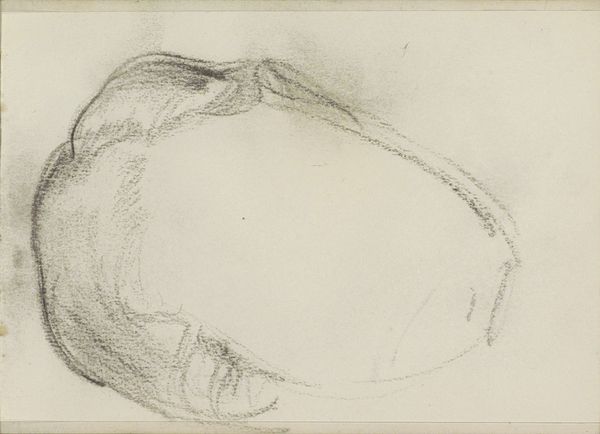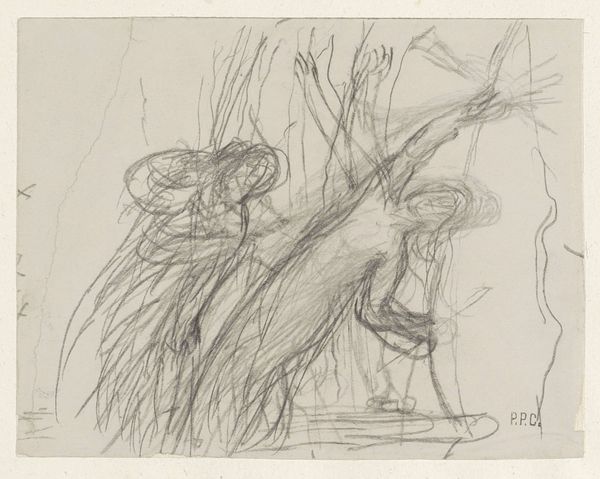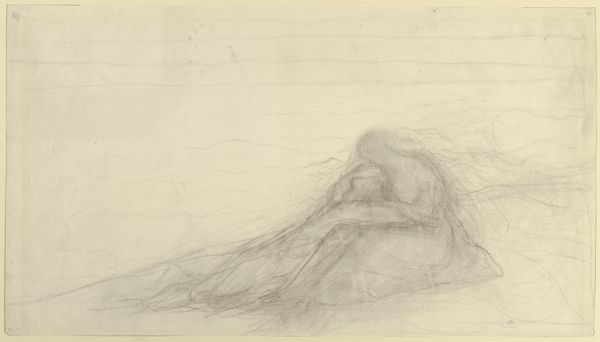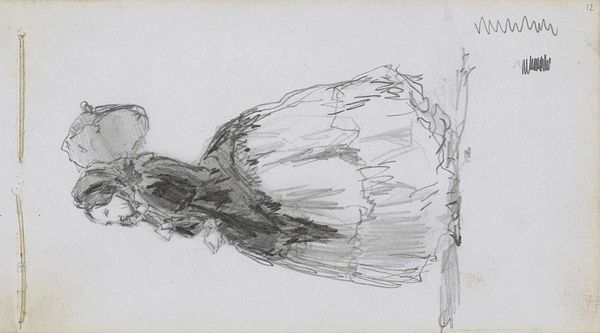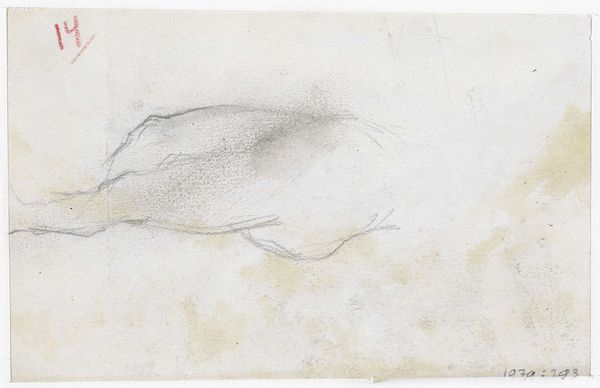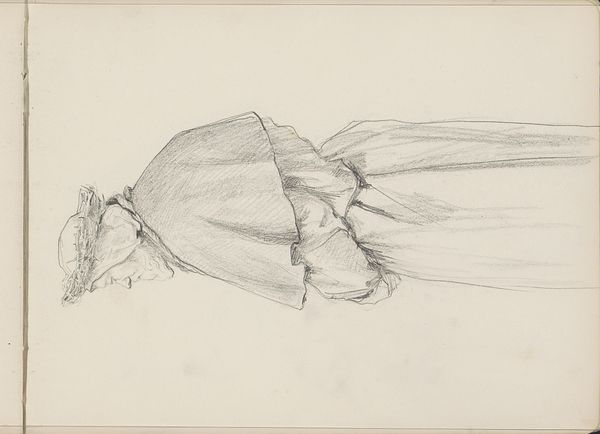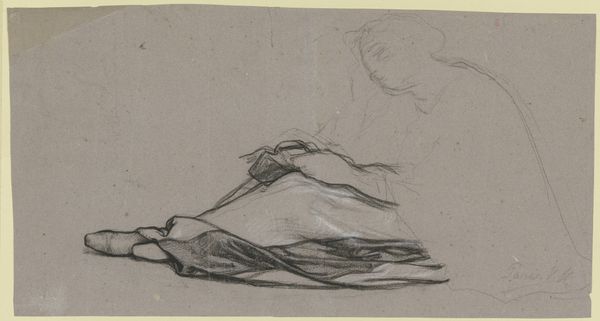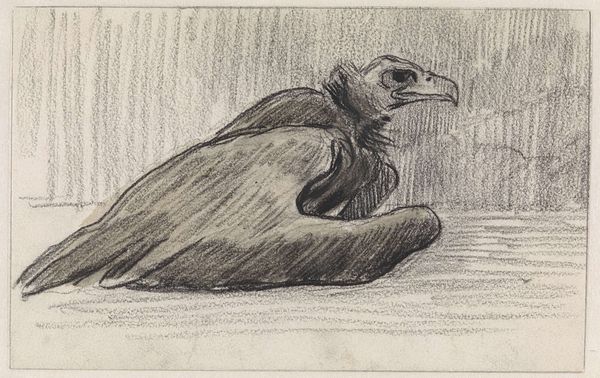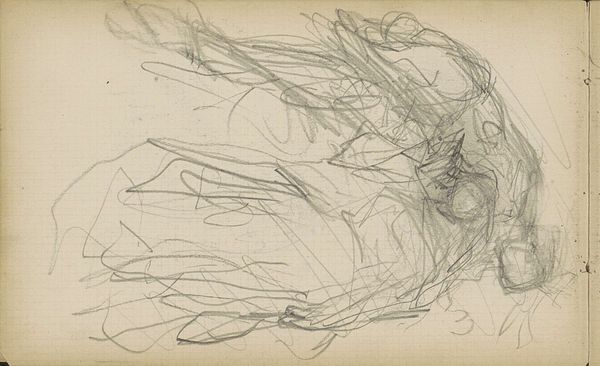
drawing, dry-media, pencil
#
pencil drawn
#
drawing
#
dutch-golden-age
#
pencil sketch
#
figuration
#
dry-media
#
pencil drawing
#
pencil
#
realism
Dimensions: height 190 mm, width 290 mm
Copyright: Rijks Museum: Open Domain
Curator: So here we have Jozef Israëls's "Dead Bird," a pencil drawing. It's currently held here at the Rijksmuseum. Editor: It’s heavy, isn’t it? Not in a literal sense, obviously, it's a pencil sketch, but the weight of mortality… the stark finality of it all, it feels very present. You can almost feel the tiny life extinguished. Curator: Yes, the sketch certainly conveys that sense of finality, of a life stilled. There’s something intensely poignant about Israëls focusing his artistic energy on such a small, fragile subject. It prompts questions around the value we place on life and loss, doesn’t it? How often do we really stop and acknowledge the ending of any life, great or small? Editor: Absolutely. There's something about focusing on such a small creature – especially a bird, which we usually associate with freedom and the sky – that amplifies the impact. It's also tempting to read it as symbolic, perhaps reflecting on social inequalities and who society values or perhaps it's about mortality itself, which of course comes for us all eventually, regardless of societal worth. Curator: And he captures such intricate detail, despite the swiftness usually associated with sketches. The rendering of the feathers, the delicate curve of its body, the small beak... I can see the movement and energy the artist had in their strokes. It’s an exploration not just of death, but of the texture and form of this particular little bird. Editor: True, but beyond the beautiful and undeniable technical skill, the subject can’t be overlooked either. Israëls chooses the most fragile being for his sketch, and the vulnerability seeps into you. There is a history to these studies of dead animals that connect directly with societal and historical power structures, you know, an exercise about having absolute say about life or death. It isn't just still life but a meditation on taking a life in that time frame. Curator: It makes me wonder about Israëls himself. Was it simply an anatomical study, or was he working through something more personal, perhaps grappling with his own awareness of human and animal fragility? The beauty of art, of course, is in the many interpretations. Editor: I'm left contemplating how Israëls makes the small and seemingly insignificant a mirror reflecting larger, more unsettling realities about life, loss, and the power dynamics that shape our world. It really packs a punch. Curator: A deceptively simple image, but so powerful when you really spend time with it.
Comments
No comments
Be the first to comment and join the conversation on the ultimate creative platform.
